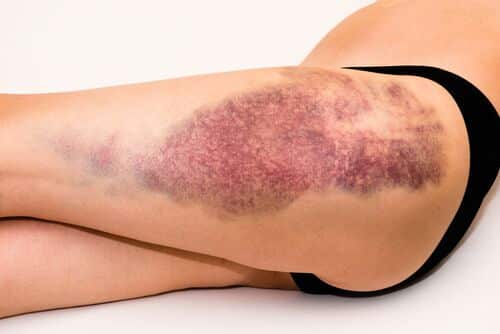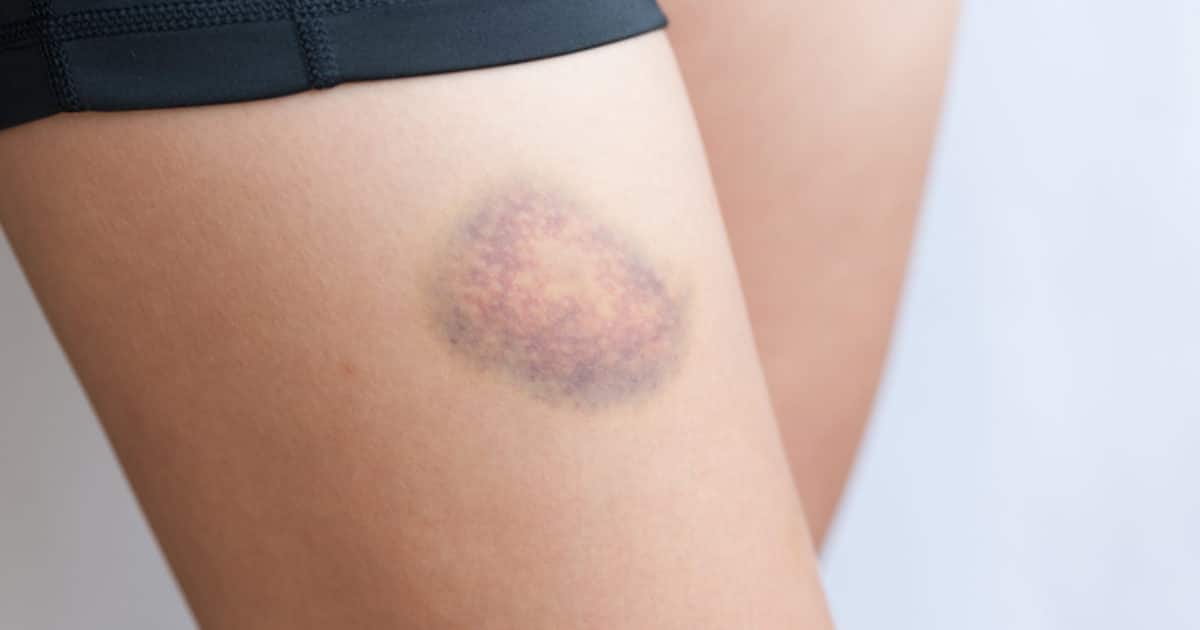Endovenous Ablation Bruising: Prevention & Care Guide
Nearly 30% of adults will experience varicose veins, leading many to consider endovenous ablation—a minimally invasive treatment known for its effectiveness. However, a common aftermath that isn’t widely discussed is the bruising. It’s a natural part of the healing process, yet it catches many off guard. This post dives into what causes this bruising, how long it typically lasts, and tips to manage and reduce its appearance. Understanding these aspects can significantly ease the recovery journey, making it less daunting for those considering or having undergone the procedure.
Key Takeaways
- Endovenous ablation is a minimally invasive procedure for treating varicose veins, but it’s normal to experience some bruising afterward. Understanding the procedure can help set realistic expectations.
- Different types of endovenous treatments are available, each with its own set of potential bruising and side effects. Knowing the specifics can aid in choosing the right treatment option.
- Bruising post-ablation is common and usually a sign of the body’s natural healing process. The severity can vary based on the treatment type and individual patient factors.
- Managing bruising effectively involves following aftercare instructions closely, such as wearing compression garments and engaging in recommended activities to promote healing.
- Simple tips like applying ice, elevating the treated area, and avoiding certain medications can significantly reduce the extent of bruising and discomfort.
- Always monitor the healing process and be aware of when to seek medical advice if bruising appears excessive or is accompanied by other concerning symptoms.
Understanding the Ablation Procedure
Goal Setting
Endovenous ablation aims to address varicose veins. It’s a minimally invasive treatment that offers relief from discomfort and improves vein appearance.
This procedure targets problematic veins. Doctors use thermal energy to seal them off effectively. The goal is clear: improve blood flow and reduce symptoms.
Procedure Steps
The process begins with local anaesthetic. This ensures patient comfort during the operation.
A small catheter enters the vein under ultrasound guidance. Then, either laser or RF energy applies heat directly to the vein walls. This heat causes the vein to collapse and seal shut.
Thermal vs. Surgical
Endovenous thermal ablation stands out from traditional methods like ligation and stripping. It is less invasive, reducing recovery time significantly.
Traditional surgeries often require general anesthesia and more extensive recovery periods. In contrast, ablation procedures typically involve only tumescent anesthetic. They allow for quicker return to daily activities.
Types of Endovenous Treatments
Thermal Ablation
Endovenous thermal ablation uses heat to close off problematic veins. Doctors often recommend it for severe venous insufficiency. This method involves inserting a thin catheter into the abnormal vein. Through it, either laser or radiofrequency energy applies heat directly to the vein wall, causing it to collapse and seal shut.
Patients can expect minimal downtime, typically resuming normal activities within a day. The success rate is high, with most seeing significant improvement in symptoms.
Phlebectomy
Ambulatory phlebectomy targets bulging varicose veins near the skin’s surface. Surgeons make tiny incisions to remove these blood vessels manually. It’s best for visible and palpable veins that cause discomfort.
Recovery from this procedure is quick. Most individuals return to their daily routines immediately, with full recovery taking about a week. The outcome is not only functional but also cosmetic, leaving little to no scarring.
Sclerotherapy
Sclerotherapy involves injecting a solution directly into the vein, causing it to scar and reroute blood through healthier veins. It’s an effective treatment for smaller varicose and spider veins.
Patients usually notice improvements within weeks, although several treatments might be necessary for optimal results. This method has minimal recovery time, making it a popular choice for those seeking less invasive options.
Causes of Post-Ablation Bruising
Body Response
Bruising is a common side effect of endovenous ablation. It stems from the body’s natural reaction to the treatment. As veins are closed off or removed, surrounding tissues may show signs of this internal activity.
Patients often notice color changes in their skin soon after the procedure. This is due to blood vessels reacting and sometimes leaking small amounts of blood under the skin. The extent and color of bruising can give clues about how well the area is healing.
Inflammation Effects
The treated area’s inflammation is a key factor leading to bruising and redness. This inflammation signals that the body is working hard to heal. However, it also means that capillaries are more likely to leak, contributing to bruising.
In some cases, patients might experience more pronounced swelling alongside bruising. This combination indicates an active healing process but can be uncomfortable for some.
Individual Factors
The extent of post-ablation bruising varies widely among patients. Several factors influence this variation, including:
- The type of endovenous treatment received.
- An individual’s tendency to bruise easily.
- How closely post-procedure instructions are followed.
People with sensitive skin or those taking certain medications may notice they bruise more easily than others. Following all aftercare recommendations can help minimize these effects.
Managing Bruising After Treatment
Cold Compresses
After undergoing endovenous ablation, it’s common to experience some bruising and swelling. Applying cold compresses can be incredibly effective during the initial days post-treatment. This simple action helps reduce both swelling and the intensity of bruising by constricting blood vessels.
Patients should apply these compresses for about 15 minutes at a time. They must ensure not to apply ice directly to the skin to avoid frostbite.
Compression Stockings
Another key strategy involves wearing compression stockings as directed by healthcare providers. These stockings play a crucial role in supporting healing and minimizing bruising. They exert gentle pressure on the legs, improving blood flow and reducing the risk of blood pooling from incompetent perforators.
It’s important for patients to wear these stockings consistently for the period recommended by their doctor, often several weeks post-procedure.
Gentle Activities
Engaging in gentle activities like walking is highly recommended to promote circulation and facilitate faster healing. Walking activates calf muscles, effectively pumping blood back towards the heart. This not only aids in reducing swelling but also helps in quicker resolution of bruising.
Patients should aim for short, frequent walks rather than long periods of standing or sitting, which can exacerbate symptoms.

Tips for Reducing Bruising
Medication Caution
Avoid certain medications before your treatment. Aspirin and fish oil, for example, can make bleeding and bruising worse. Talk to your doctor about which medicines to steer clear of.
They might suggest alternatives that don’t affect your recovery. This step is crucial for maintaining healthy veins post-procedure.
Diet and Hydration
Stay hydrated and eat right. A diet rich in Vitamin C and K aids skin health and healing. These nutrients help repair tissue and reduce the likelihood of bruising.
Drinking plenty of water keeps your body functioning well. It also ensures your veins are in the best condition for treatment.
Leg Elevation
Elevate the treated leg whenever possible. This reduces blood pressure in the veins, helping to minimize bruising. Use pillows or cushions to keep your leg up comfortably.
This simple action can have a significant impact on your recovery speed.
Compression Stockings
Wear compression stockings as advised by your healthcare provider. They support vein health and reduce swelling and bruising after treatment.
These stockings apply gentle pressure, promoting blood flow back to the heart. They’re an essential part of recovering with fewer bruises.
Importance of Aftercare
Follow Instructions
After undergoing endovenous ablation, closely adhering to post-procedure instructions is vital. Patients should strictly follow their healthcare provider’s guidance to ensure optimal healing. This includes managing bruising and reducing the risk of complications.
Heeding advice on activity levels and compression garment use can significantly impact recovery. These steps are crucial for achieving the desired outcomes.
Monitor Healing
Attending follow-up appointments is essential for monitoring progress. Healthcare providers assess the treated area, ensuring that healing occurs as expected. They also evaluate the success rate and long-term durability of the treatment.
These visits allow for timely interventions if issues arise. They offer an opportunity to address any concerns patients may have during their recovery process.
Healthy Lifestyle
Maintaining a healthy lifestyle plays a significant role in preventing future vein problems. Regular exercise, a balanced diet, and weight management contribute to better long-term results.
Adopting these habits supports vein health and enhances the effectiveness of treatments like RF closure. It’s a proactive approach to care that benefits overall well-being.
When to Seek Medical Advice
Infection Signs
Patients should be vigilant for signs of infection following endovenous ablation. Increased pain, fever, or unusual discharge from the treatment site are clear indicators. These symptoms may suggest complications that need immediate clinical attention.
It is crucial to contact a healthcare provider without delay if any of these signs emerge. They can perform tests to determine the cause and prescribe necessary treatments.
Thrombosis Warning
Deep vein thrombosis (DVT) is a serious condition that requires urgent care. Symptoms include significant swelling, pain, or changes in skin color around the treated area. DVT can lead to long-term health issues if not addressed promptly.
Patients experiencing these symptoms should seek medical advice immediately. Healthcare providers use various methods, including ultrasound, to diagnose DVT and recommend appropriate interventions.
Numbness Concerns
While minor numbness or discomfort is normal after endovenous ablation, persistent or worsening symptoms are not. Patients should monitor their recovery process closely. Any prolonged discomfort might indicate underlying issues that need professional evaluation.
Healthcare professionals can assess these symptoms through clinical examination and decide on the best course of action. Remember, early intervention can prevent potential complications down the line.
Summary
Endovenous ablation offers a solution for varicose veins, but bruising is a common side effect. Understanding the procedure, its types, and why bruising occurs equips you with the knowledge to manage and potentially reduce these side effects. Aftercare plays a crucial role in your recovery, highlighting the importance of following professional advice and knowing when to seek further medical help. Remember, your actions post-treatment significantly influence your healing process.
Taking proactive steps towards minimizing bruising and ensuring a smooth recovery demonstrates your commitment to your health. If bruising persists or concerns arise, don’t hesitate to contact your healthcare provider. Your journey towards healthier veins doesn’t end with the procedure; it continues with diligent aftercare and a willingness to seek expert advice when needed. Start your path to recovery today by embracing these tips and prioritizing your well-being.
Frequently Asked Questions
What is endovenous ablation?
Endovenous ablation is a minimally invasive treatment that uses heat to close off varicose veins, improving blood flow and reducing vein visibility.
How many types of endovenous treatments are there?
There are primarily two types: laser ablation (EVLA) and radiofrequency ablation (RFA), both effectively treating varicose veins.
Why do I have bruising after endovenous ablation?
Bruising is a common side effect due to the treatment’s impact on the veins, causing them to break down and be absorbed by the body.
What can I do to manage bruising after treatment?
Applying ice packs, wearing compression stockings, and elevating the treated area can significantly help reduce bruising and discomfort.
Are there tips for reducing bruising post-ablation?
Yes, avoiding anti-inflammatory medications before treatment, staying hydrated, and following your doctor’s aftercare instructions can minimize bruising.
How important is aftercare following endovenous ablation?
Aftercare is crucial for healing, preventing complications, and achieving the best results from your treatment. Follow your doctor’s advice closely.
When should I seek medical advice after endovenous ablation?
Seek medical advice if you experience severe pain, significant swelling beyond normal bruising, or signs of infection like fever or unusual discharge.






